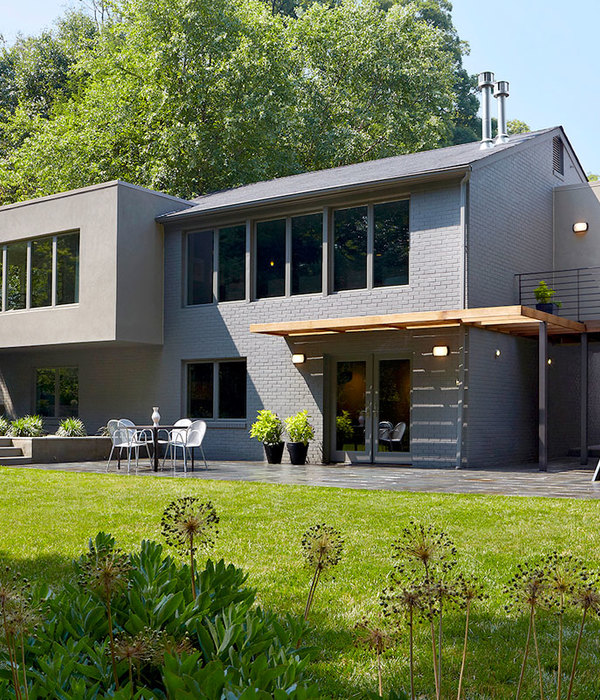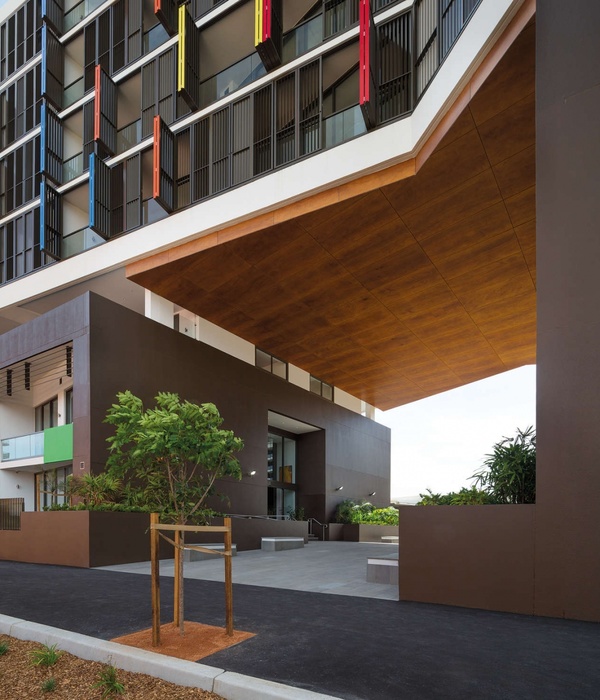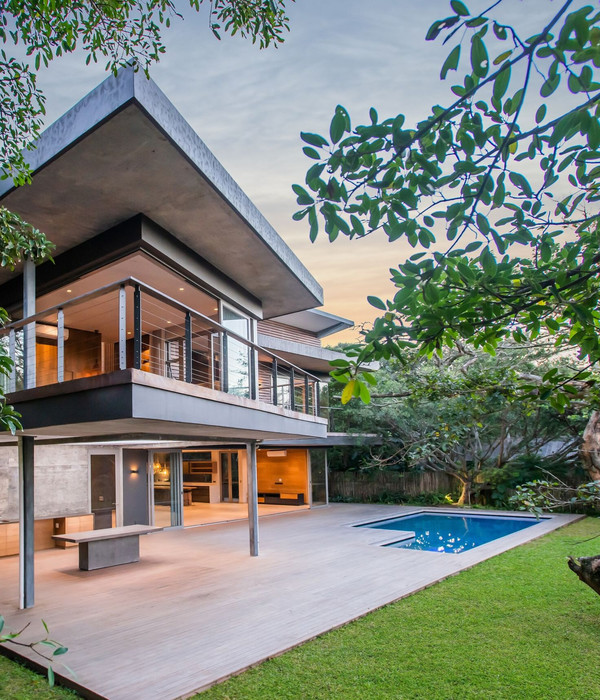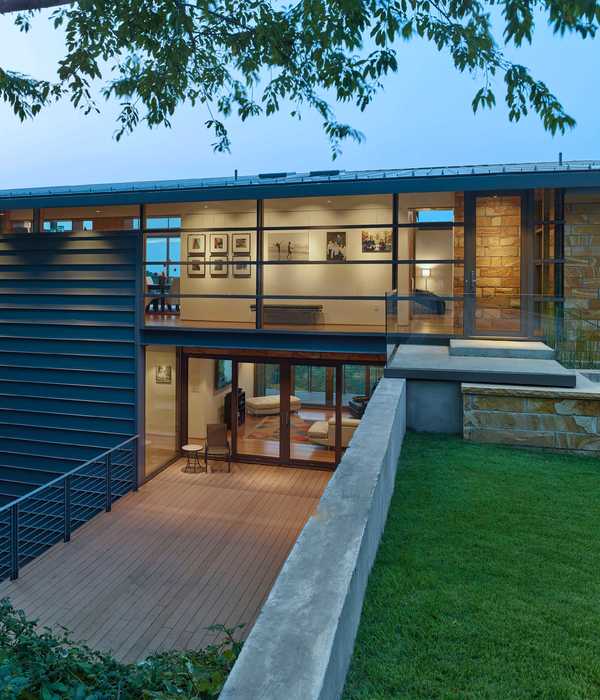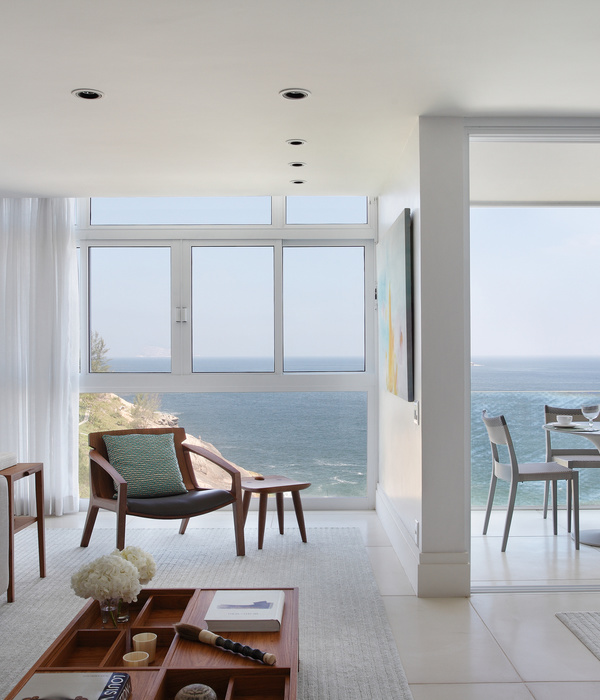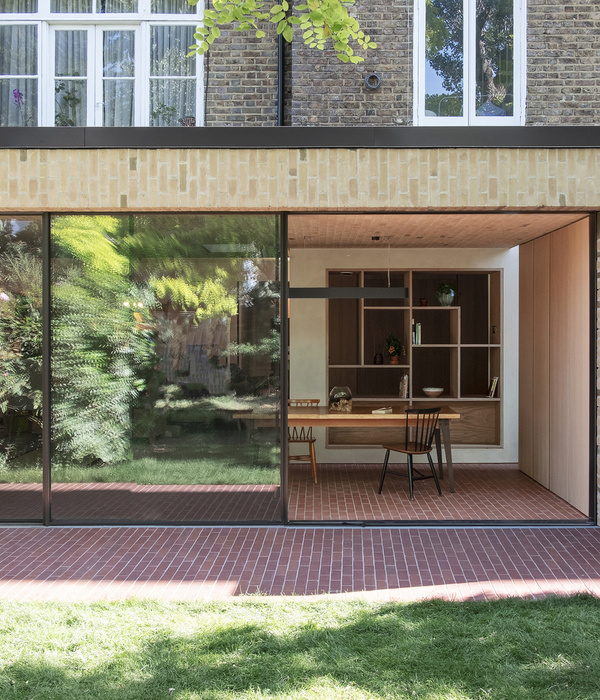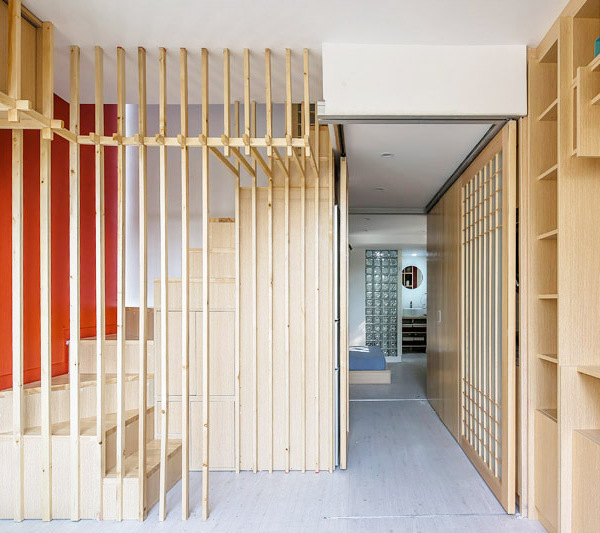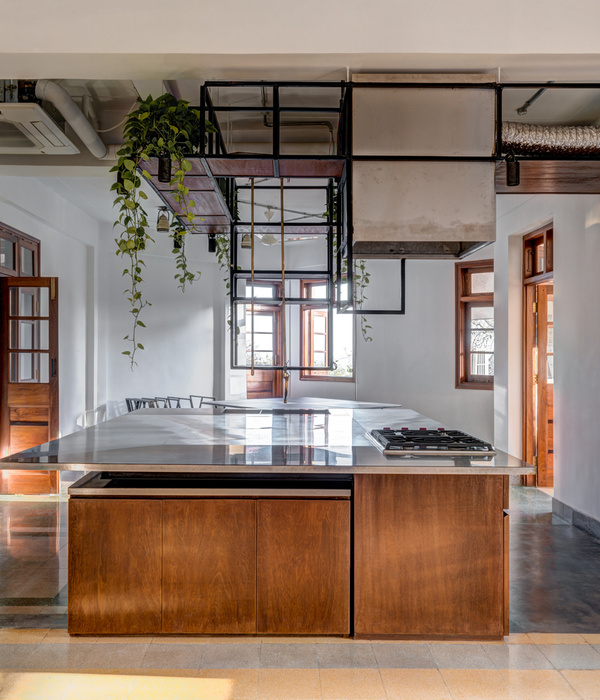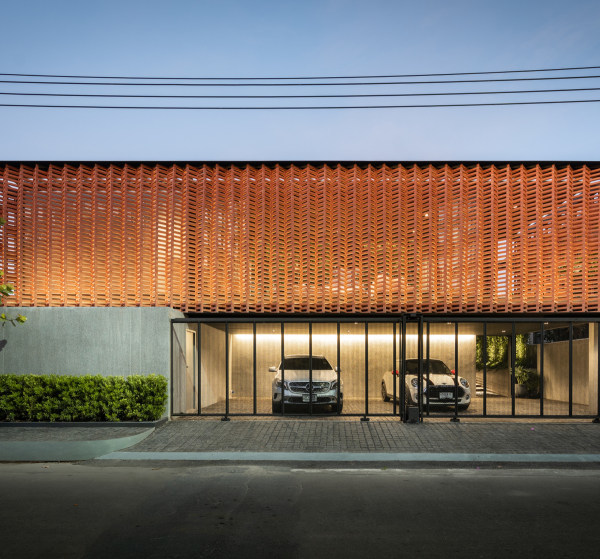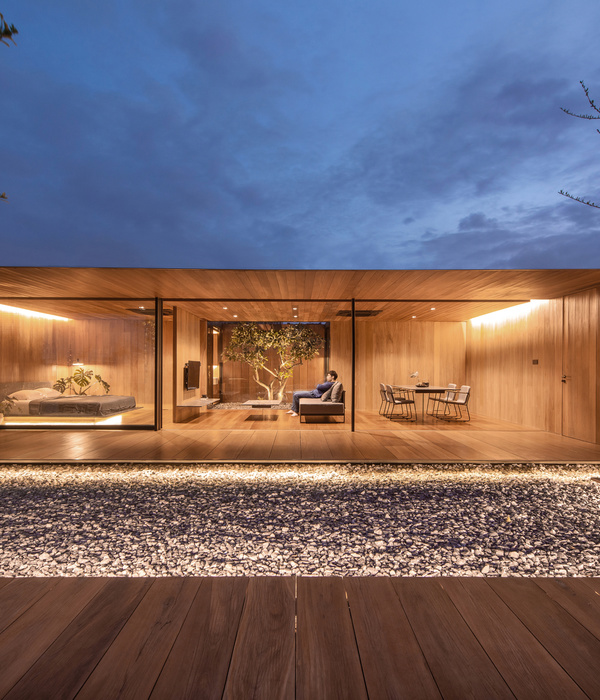将一个建于1885年的宽敞停产工厂改建为音乐家们的公寓和工作场所。原有建筑结构依然完好。工厂里面的小建筑被拆除,其材料用于新建,形成可持续又有趣的材料感。
这所公寓可以让音乐家在其中生活和教学,包含宾馆公寓,培训师,录音室,食堂,儿童游乐室。工厂为木结构,柱网为4米,外圈是一层围墙。新建的结构尊重老建筑的结构,并形成有趣的对话,公寓房间的平面布置上遵循老建筑的柱网关系。此外整个公寓的中间打开一个开放中庭用作生活空间。新建公寓房间做了良好的隔音处理,这样音乐家在自己的房间中播放音乐不会干扰到邻居。卫生间和厨房都隐蔽在特质的家具中。在家具里还包含一个通往家具上部空间的楼梯,这个空间放置了一张双人床。
Musikerwohnhaus
Bauherr: Stiftung Habitat, Basel
Architekt: Buol & Zünd Architekten BSA, Basel
Stand:
Programm, Kosten:
The various buildings of a discontinued factory dating from 1885 have been transformed into a spacious home and work environment for musicians and their families. The building fabric was not in all parts of good quality. The brick structure of the workshop in the backyard as well as the warehouse was adequate, and the buildings on Lothringerstrasse, which once housed both administration and manufacturing, were used in the ensemble since they had a certain formal panache.
Structures of minor architectural value were demolished and the remaining elements incorporated into the new development, forming an interesting conglomerate of special qualities. Acoustic adaptations enable people to both teach and live in the new apartments. Guest apartments, training rooms, a sound/recording studio, a canteen and a spacious children’s playroom all form part of the new musicians’ apartment house.
The structural diversity of the original factory site meant that for each building a separate conversion strategy had to be developed. The former warehouse was the biggest building, a wooden structure with a spacing of 4 x 4 x 4 meters surrounded by a massive external wall. These characteristics have been integrated into and adapted to the new building: The internal wooden structure is being copied onto the external wall by using concrete pillars and beams, and the diagonal steel supports also show the internal structure outside.
The layout of the maisonette apartments and flat shares mirrors the grid pattern of the old wooden structure. However, in one part the existing structure was weak and was therefore replaced with a new open courtyard living space. Compared to the regular apartments guest apartments have been more modestly refurbished, but they are also adapted to enable playing music without disturbing
neighbours.
Bathroom and kitchen facilities are hidden in purpose-built furniture which is sound-absorbing, too. This furniture is designed as a gallery with a bunk bed on top, the wood-panelled encasement is designed to remind of the former warehouse shelves. Existing building materials were recycled and put to good use in the new building in inventive ways.
The decoration of the frosted glass panels has been inspired by a wire fence found in the area. At first the fence was planned to be put behind glass, but in the end an abstract version of the wire was etched onto the window. Windowsill fillings and bathroom ceramic tiles were carefully removed, restored and reused in the new building.
▼Before
▼Ground floor
▼First floor
▼South elevation
▼Section
{{item.text_origin}}

